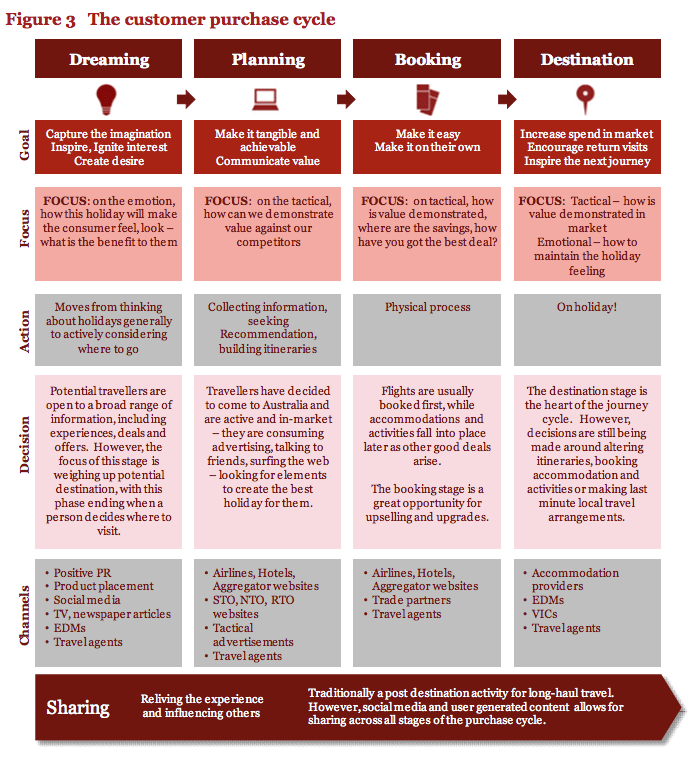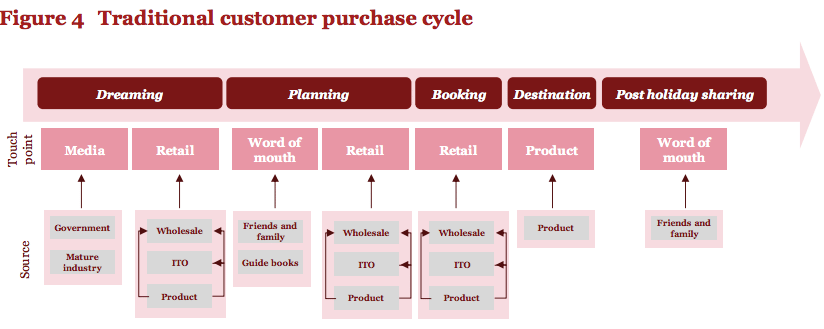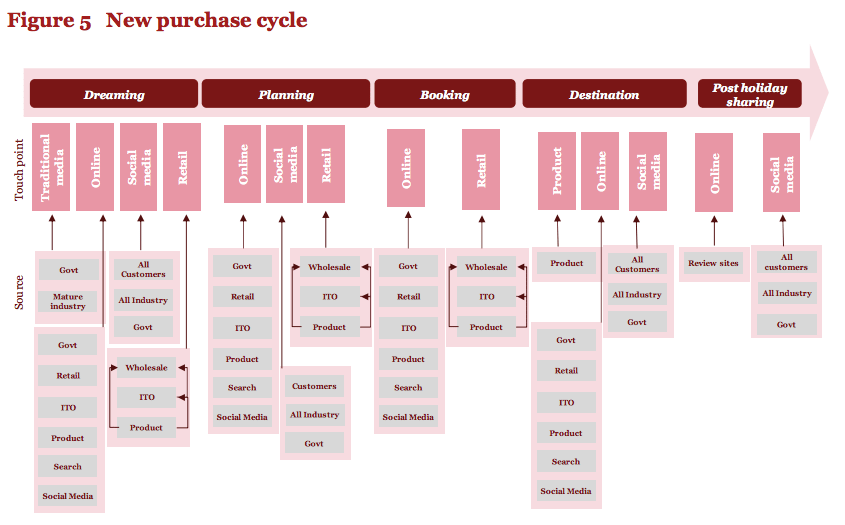Skift Take
Now you now why it is hard for startups -- and indeed traditional players -- to be successful in digital: all the historical industry-defined value chains have blurred -- we would even argue the phases of dreaming, planning, booking, destination aren't as clear as this report says -- and consumers are jumping across all of these using all the digital tools at their disposal.
Travel was one of the first sector that went online, with airline and hotel sectors being the first ones to make the transition. And the travel customers followed and in the process changed all the industry-defined value chains of yore. Tourism Australia has come out with a detailed study, compiled with the help of PricewaterhouseCoopers, to understand its current travel distribution approaches and potential models for the future across Australia’s key holiday markets.
In this analysis is a good definition of the customer purchase cycle in travel:
The fundamental components of this cycle have not changed, but the way in which the customer is influenced and informed at each phase of the cycle has evolved over time.
Traditionally, the key touch points for customers were traditional media sources, and retail outlets supported by a defined supply chain and word of mouth. Within this construct, the roles and responsibilities of industry players at each phase were easy to define, and greater control was held over the types of products presented to customers.
That chart below illustrates this traditional cycle, pre-digital:
With digital and especially social media, the sources that inform and influence this cycle have changed, as direct media, brochures and retail travel agents are no longer the only mechanism to access information and book travel. The chart below sets out the touch points and sources in this digital world of travel:
Some points to note here:
- there is an increased number of customer touch points stemming from the addition of online and social media sources
- there has been a significant increase in the number of sources that can provide information through these touch points
- these additional sources have facilitated disintermediation of the distribution supply
- industry players are required to have an increased presence at multiple stages of the purchase cycle. This is both an offensive reaction – i.e. a way to grow sales – and a defensive ploy to protect market share as competitors move into this space. This increase is most visible in the Dreaming, Planning and Booking phases and has led to a blurring of roles and responsibilities, and a need to be better aligned with the touch points and types of information customers want at each of these stages.
The Daily Newsletter
Our daily coverage of the global travel industry. Written by editors and analysts from across Skift’s brands.
Have a confidential tip for Skift? Get in touch
Tags: tourism australia


